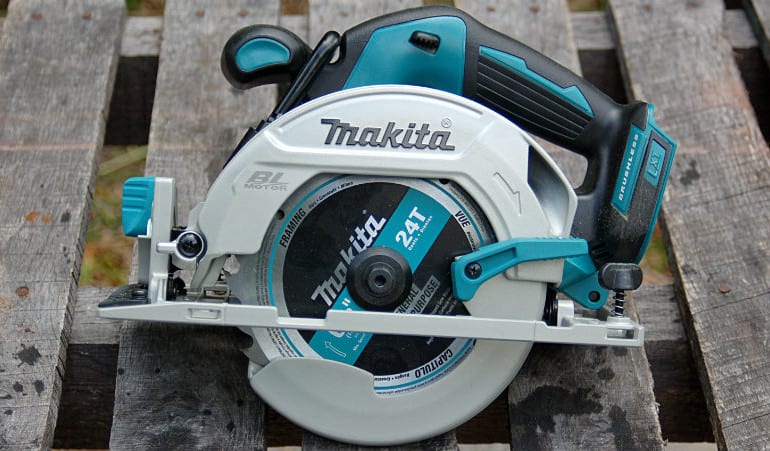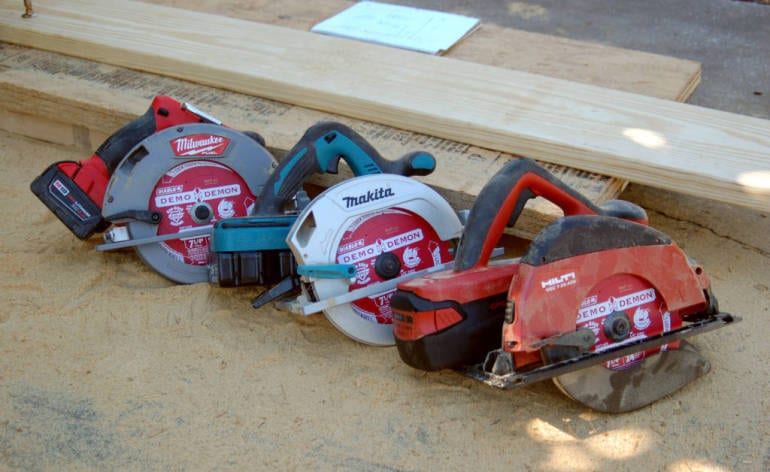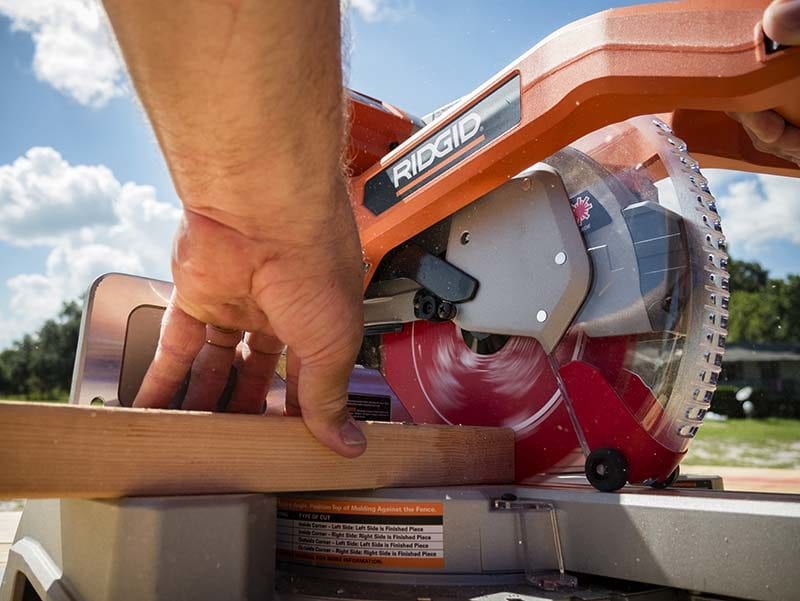Tool manufacturers continue to add more safety and fatigue-reducing features to their products. Examples abound with auto lock-on switches, auto lock-off switches, blade guards, and shields—just to start. You may take one safety feature for granted simply because you can’t see it—an electric brake. On the best circular saws and many other saws, an electric brake marks a premium feature. This solitary feature has saved many a blade, wood floor, cord, or even a finger or toe! It’s easy for a scrap of wood or some obstruction to prevent the blade guard from falling back in place after a cut. Without an electric brake, a blade can continue spinning for 10 seconds or more on some saws. An electric brake stops the blade in about 2 seconds. So how does a saw’s electric brake work to keep you safe?
Quick Summary
- Trigger release reverses the electrical flow
- This type of braking uses electricity
- Mechanical brakes (more rare) stop a rotating wheel or blade nearly instantly
- Electronic brakes wear out, but less-so than mechanical brakes
- Efficiency and brake speed may slow over time—requiring service
How Does a Saw’s Electric Brake Work?
The electric brake might be technically difficult to accomplish, but the mechanism is easy to explain. Real easy. Are you ready for it? Here it comes:
The flow of electricity reverses when the trigger is released.
Yep. That’s about it. Reversing the electrical flow throws the motor into reverse long enough to provide the friction needed to stop the rotating blade. As a result, the saw blade stops much more quickly than it otherwise would on its own. It’s easy to imagine the potential damage a blade spinning for 10-12 seconds after the cut could do—particularly with larger, heavier saws. Equal danger exists with both circular saws and angle grinders which can be set down while the blade still spins.
While some grinders have mechanical brakes that stop a rotating wheel or blade instantly, electric brakes (which make up a majority of these systems) rely on electricity to stop the blade.
Using saws that have an electric brake whenever possible alleviates this danger. If you’re the purchase decision maker for your company or even just buying a tool for your own use, an electric brake is one feature you should insist on.
How Long Do Electric Saw Blade Brakes Last?
While electrical brakes don’t have the same wear as mechanical systems, they can wear out over time due to brushes and other factors. In either case, it’s wise to monitor how long the blade spins after the trigger is released. If the brake ceases to stop the blade quickly, consider servicing or replacing the tool.

We also feel the need to point out how brushless motors help slow down blades. With a brushless motor, natural electric friction exists anytime power gets removed from the circuit. This tends to slow down spinning blades naturally—even if no specific blade brake circuit exists. Because brushless motors already use advanced electronics anyway, you find they often go ahead and integrate some kind of blade brake system to help slow down a spinning blade once you release the trigger.
Safety First
Don’t think of the electric brake as the first line of defense. The operator always serves that role. Staying safe on the jobsite starts with your mindset. As with any tool, it’s possible for this mechanism and/or the blade guard to fail. The brake only serves as a backstop to careful use. The electric blade brake (or electronic brake) has likely been the invisible guardian of many tradesmen. Be sure it stays in working order.
Now you know the answer when someone asks you, “How does a saw’s electric brake work?” We hope you work more safely because of it. If you’re a Pro and you have circular saw safety tips, add them in the comments below or leave a comment on Facebook, Instagram, or Twitter.



